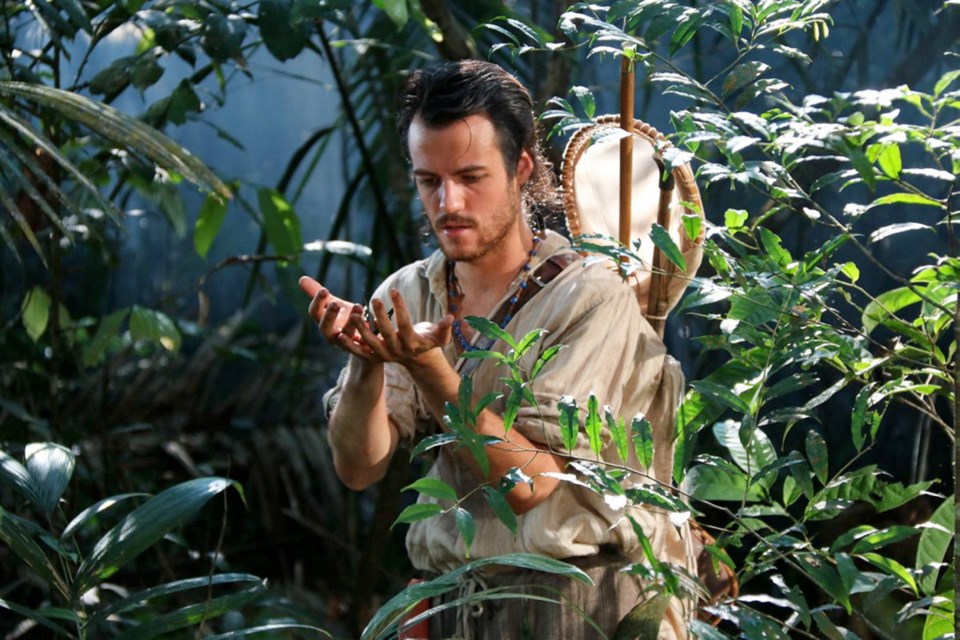What: Amazon Adventure
Where: Imax Victoria, Royal B.C. Museum
When: Daily at 11 a.m., 4 and 6 p.m. (3D); 1 p.m. (2D)
Tickets, info: imaxvictoria.com
Rating: Two and a half stars (out of four)
The X-Men franchise's shape-shifting mutant Mystique has nothing on some of the chameleonic creatures that inhabit the lush, vast rainforest in Amazon Adventure, a film that is visually striking and fitfully fascinating, but not nearly as captivating as its title implies.
While it’s refreshing to see a large-format film rely more upon solid performances within an initially engaging narrative than standard-issue narration, director Mike Slee’s approach prematurely wears out its welcome.
His technique is deployed in the service of an interesting enough story about the genesis of a controversial theory that would become known as Batesian mimicry. It’s the evolutionary process where plant and animal species develop an ability to appear simmilar to another species, one that would prove unpalatable to predators and consequently increase their chances of survival.
In contrast to the perilous jungle thrills and exotic escapades that the film’s somewhat misleading title would suggest lie ahead, Amazon Adventure is essentially a straightforward tale of scientific discovery.
It’s the kind of earnest, but increasingly patience-trying film, that will be best appreciated by viewers in search of an educational experience rather than a thrill ride.
Set in the Amazon during the 1850s, the film focuses chiefly on Henry Walter Bates, the inquisitive young British naturalist and explorer who set sail from England with his friend, Alfred Wallace, while they were in their early 20s. During more than a decade spent in the biodiverse rainforest doing painstaking research, the nature-loving sleuth formed close relationships with native tribes and survived yellow fever and close encounters with poisonous snakes, insects and a bad-tempered jaguar.
By the time he returned to England, Bates had identified 8,000 new species, providing “the beautiful proof” to support his idol Charles Darwin’s controversial theory of natural selection, i.e. survival of the fittest.
It is to actor Calum Finlay’s credit that this obsessive and ultimately influential scientist's passion and perseverance amid the flora and fauna in the field is more engaging, at least for awhile, than it has any right to be considering the tedious dialogue and commentary he is asked to convey within a disjointed dramatization.
Amazon Adventure is most arresting when it zooms in on the natural wonders, notably the spectacle of fluttering butterflies, a particularly captivating sight in the 3D version.
(There is also a daily screening of a standard 2D version for viewers who prefer the more traditional format).
As fascinating as it is to behold this exercise in edu-tainment’s art direction — particularly the authenticity of the avid beetle collector’s field notebooks, botanical drawings and instruments from the 1850s — this isn’t the kind of detail you’d expect would be prioritized in such films that traditionally capitalize more on on the big-picture visual potential.
Younger viewers might enjoy the antics of the scientist’s pet monkey, and some of the crisp macro-photography of shape-shifting creatures from a leaf fish to moth caterpillar, can be eye-filling in 3D.
The stunning cinematography isn’t enough to compensate, however, for the ill-advised focus on the minutiae of scientific research at the expense of a larger volume of dazzling natural wonders we expect in such films.



